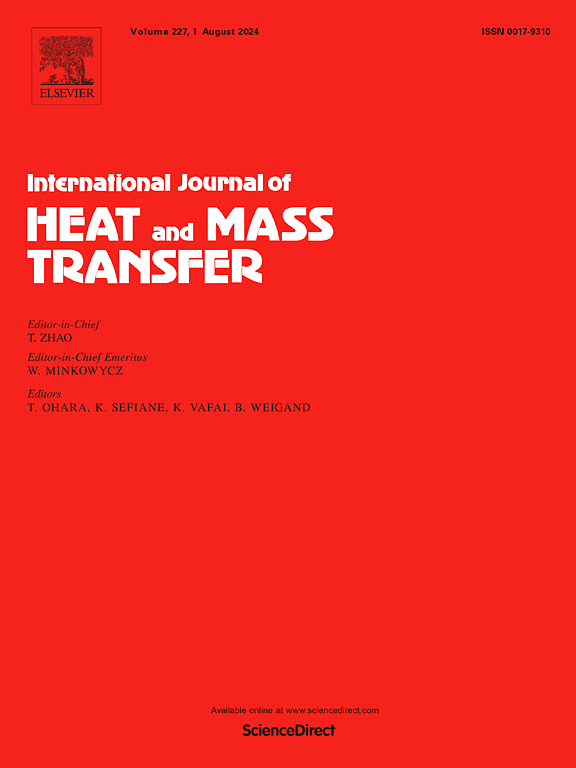基于参数输入物理信息神经网络的自然对流直接数值模拟
IF 5.8
2区 工程技术
Q1 ENGINEERING, MECHANICAL
International Journal of Heat and Mass Transfer
Pub Date : 2024-11-06
DOI:10.1016/j.ijheatmasstransfer.2024.126379
引用次数: 0
摘要
热对流在自然界中观察频繁,在工业中应用广泛,因此成为许多实验和数值研究的重要课题。热对流的一个研究范例是热驱动方形空腔系统,它是自然对流的经典问题之一。随着计算资源的发展,利用深度学习技术解决自然对流问题的方法蓬勃发展。本研究采用物理信息神经网络(PINNs)方法求解热对流问题,训练神经网络模拟从 Ra=103 到 Ra=108 的不同 Ra 数下自然对流的速度场和温度场。此外,还构建了一个参数输入 PINNs 模型,以进一步发展这种方法。该框架的优势在于可同时快速预测指定范围内任何 Ra 数情况下的流场结果。此外,还对参数输入 PINNs 模型的流场结果进行了统计分析,以证明该模型的泛化性能。本文章由计算机程序翻译,如有差异,请以英文原文为准。
Direct numerical simulation of natural convection based on parameter-input physics-informed neural networks
Thermal convection is frequently observed in nature and widely used in industry, making it an important subject for many experimental and numerical studies. A well-researched paradigm for comprehending thermal convection is the system of thermally driven square cavities, one of the classical problems of natural convection. With the development of computational resources, methods for solving natural convection problems using deep learning techniques have flourished. In this study, a Physics-informed neural networks (PINNs) method is used to solve the thermal convection problem, with neural networks trained to simulate the velocity and temperature fields of natural convection at various Ra numbers ranging from to . Furthermore, a parameter-input PINNs model is constructed to further develop this approach. This framework has the advantage of concurrently and rapidly predicting the flow field outcomes for any Ra number scenario in the specified range. Additionally, the flow field outcomes of the parameter-input PINNs model are statistically analyzed to demonstrate the model’s generalization performance.
求助全文
通过发布文献求助,成功后即可免费获取论文全文。
去求助
来源期刊
CiteScore
10.30
自引率
13.50%
发文量
1319
审稿时长
41 days
期刊介绍:
International Journal of Heat and Mass Transfer is the vehicle for the exchange of basic ideas in heat and mass transfer between research workers and engineers throughout the world. It focuses on both analytical and experimental research, with an emphasis on contributions which increase the basic understanding of transfer processes and their application to engineering problems.
Topics include:
-New methods of measuring and/or correlating transport-property data
-Energy engineering
-Environmental applications of heat and/or mass transfer

 求助内容:
求助内容: 应助结果提醒方式:
应助结果提醒方式:


